Here are 14 things that surprised us about Tokyo specifically. There were a lot more about Japan overall and about Osaka and Kyoto.
- There are a lot of brightly-colored flowers planted all over town, along sidewalks or on road medians. These are not flowers planted by individual households, but by public workers using city funds. This wasn’t the case in Osaka or Kyoto.

- For whatever reason, there seem to be a lot of dance studios in Tokyo. They are mostly ballroom styles, like salsa or waltz.
- There are elections going on right now (early May), so white vans drive around town, with huge loudspeakers on them, blasting out what we assume are admonitions to vote for their candidate of choice. I once saw something a bit like this in San Francisco: a streetcar – hired for the day by a candidate – rolled by the polling place on Haight Street where we waited, urging us to vote for him. The elections haven’t actually begun, so no rules about distance from polling places seem to be in place, but they do have limits on when they can campaign: starting after 8 or 9 am and finishing by 7 or 8, I believe.
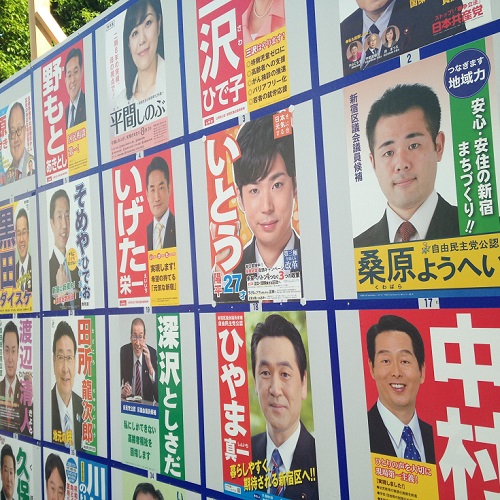
- Capsule hotels are popular here. That is a hotel that – instead of rooms – has a few large rooms, each with individual pods with a bed inside. You can store your things in a locker, sit in a common area, and then crawl into your pod to sleep. We didn’t try them because most of them are men-only, though the entire concept seems like climbing into a casket to me. The reason for the gender rule is that the most frequent customers are local men who work too late to take the subway home to their families. Not only are cabs prohibitively expensive here, but there is a concern that their late arrival would disturb their hard-studying children.
- There are lockers in most subway stations, and people use them frequently. They arrive at a subway station with luggage, stow it in a locker, and go on their way with only a purse and computer bag. I’m not sure if these people are coming in for work from other cities, or if these are people who stayed at a capsule hotel because work ended too late the night before, or some other thing.
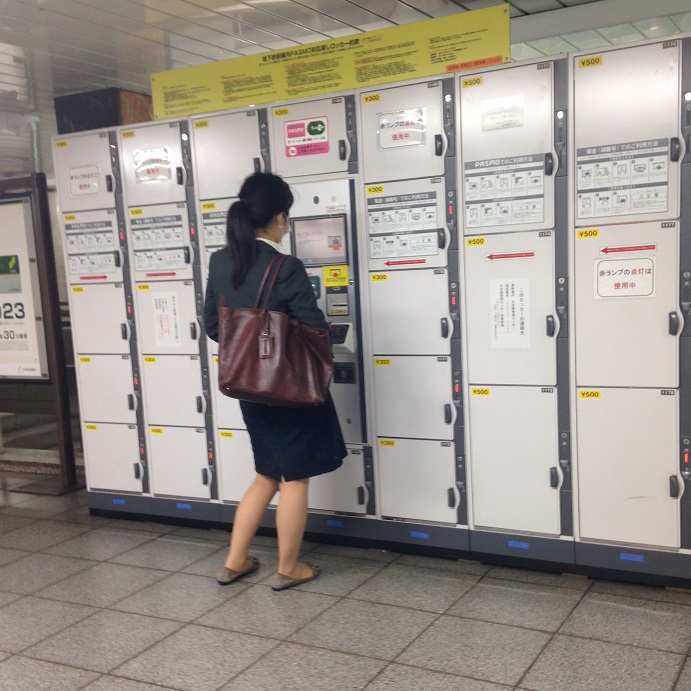
- Not every subway station has them, but a few have interesting artworks. One had a horse sculpture, another had something resembling stained glass, and several more.
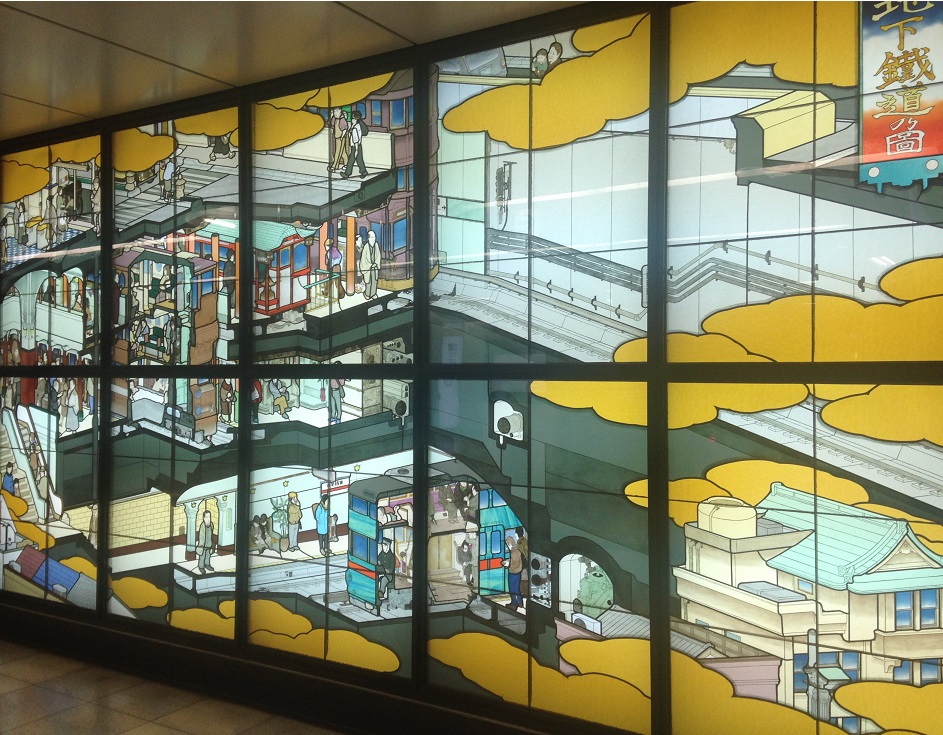
- There are women’s only subway cars for the morning commute. This is because it is particularly crazy then, with people needing to be squished into each other by conductors to get onto trains. Women’s-only cars are meant to prevent groping under cover of crowding. They’re not necessary in the afternoon/evening because people leave work at different times. Our Japanese guide said that everyone is aware of the issue and how they could fix it by staggering work start times. However, he said that there is too much of the follower/don’t be different mentality for any company to implement it, so the problem remains.
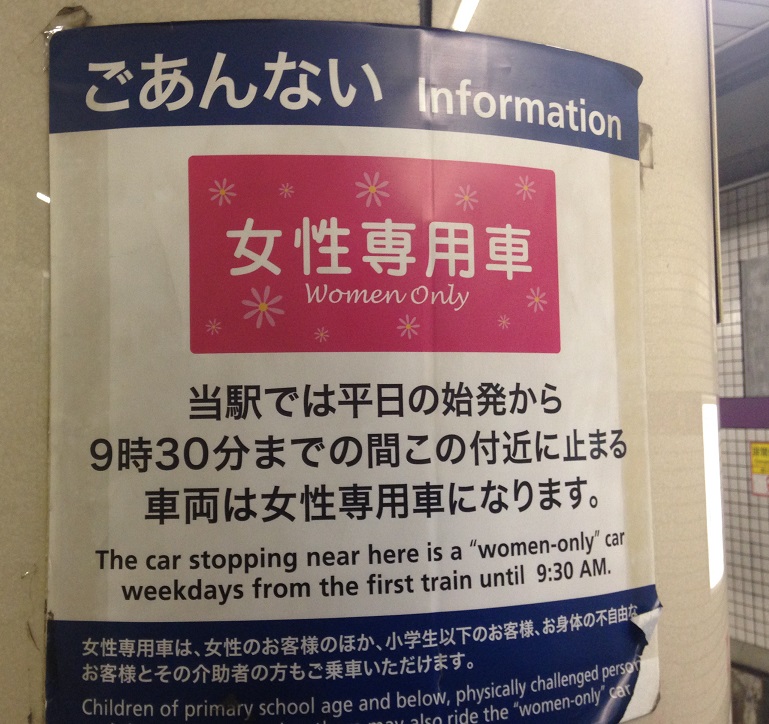
- The subway signs are very helpful to locals and novices alike. There are even signs like this, which show which car numbers are closest to specific exits, escalators, transfer points, or bathrooms!

- The manhole covers here are flowers – as opposed to Osaka’s building ones. Not all of the ones here have a design, but the ones that do tend to have this one.
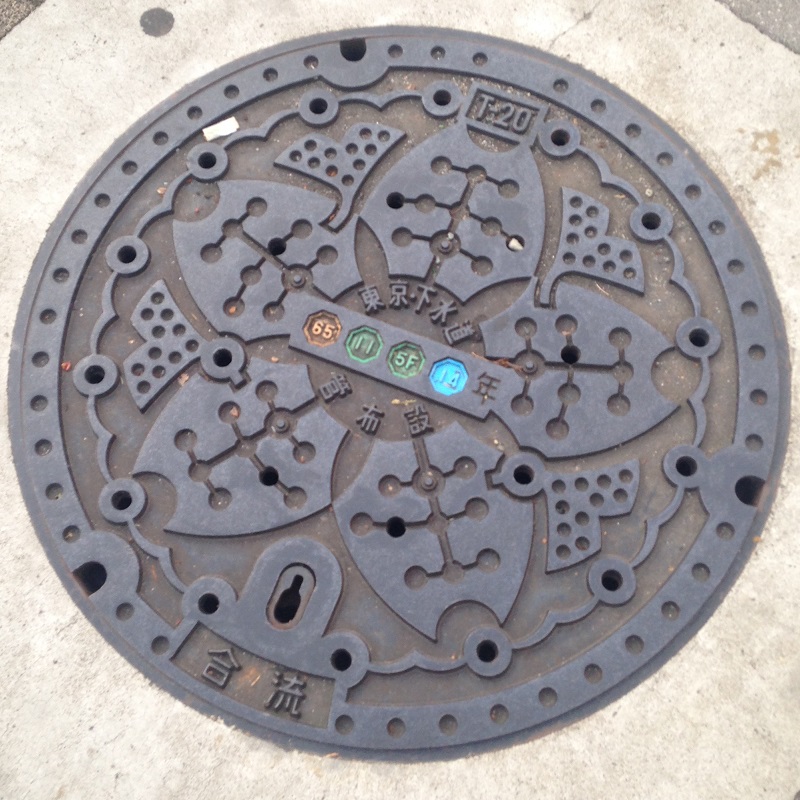
- Perhaps because of the number of times that Tokyo has burned down, there are regular fire extinguishers on the streets. They don’t look like US-style hydrants though: they look more like parking meters to me.

- At each KFC we saw (of which there were plenty), there was a Colonel Sanders statue outside. Each seemed to be decorated differently: in the Koenji area, Colonel had lots of tin foil and alien style, while another one we saw was dressed like this:

- There are places where the sidewalk is delineated into lanes. However, they are not for left versus right-side walking, but for bikes versus walkers. No one seems to use these well – including locals. We often spotted people in the wrong lanes, despite the clear signage. And where there wasn’t clear signage, it was even worse, since the divisions were not intuitive. Where just a yellow line was used to divide the lines – but not to label them, the walking lane appeared to be almost impossibly-narrow.
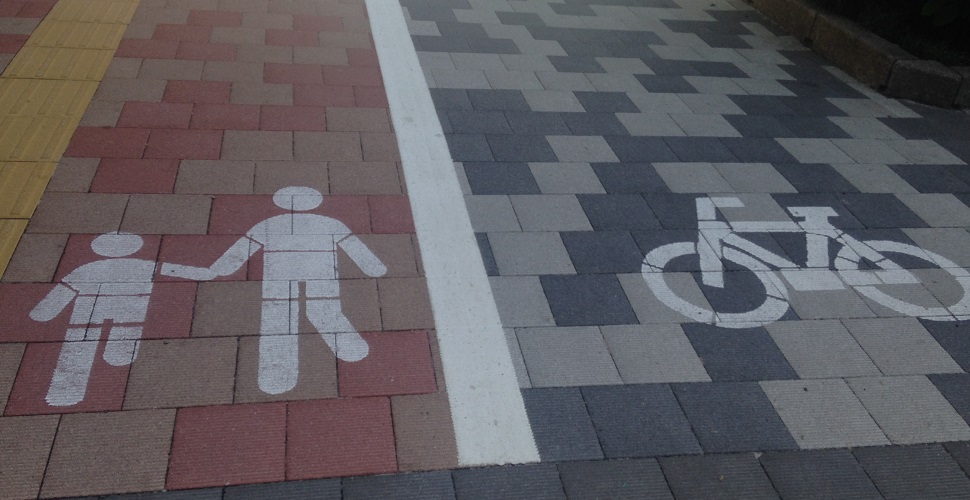
- There were also signs on the ground saying that smoking while walking is prohibited – but plenty of people disobeyed them.
- There was a Philadelphia-style Love statue in town!



Pingback: Surprising Things About Japan - Novelty Buffs
Yes, as organized as they are with everything, they have not figured out how to handle bicycles. We had a few close encounters.
The yellow line in the left side of your last picture, do you know what that is? It was an almost all side walks, but we couldn´t figure out what it was for.
No idea! B tried to walk on it, as if it was the walking lane – just because that’s all the room there was.
I thought it demarcated the center of the walking area, that people were supposed to walk just left of it. That would leave the rest of the sidewalk for bicycles.
Local pedestrians didn’t seem to be following any rules that I noticed, and bicyclists seemed to be accustomed to coming to a complete stop sometimes before going around them. So who knows?